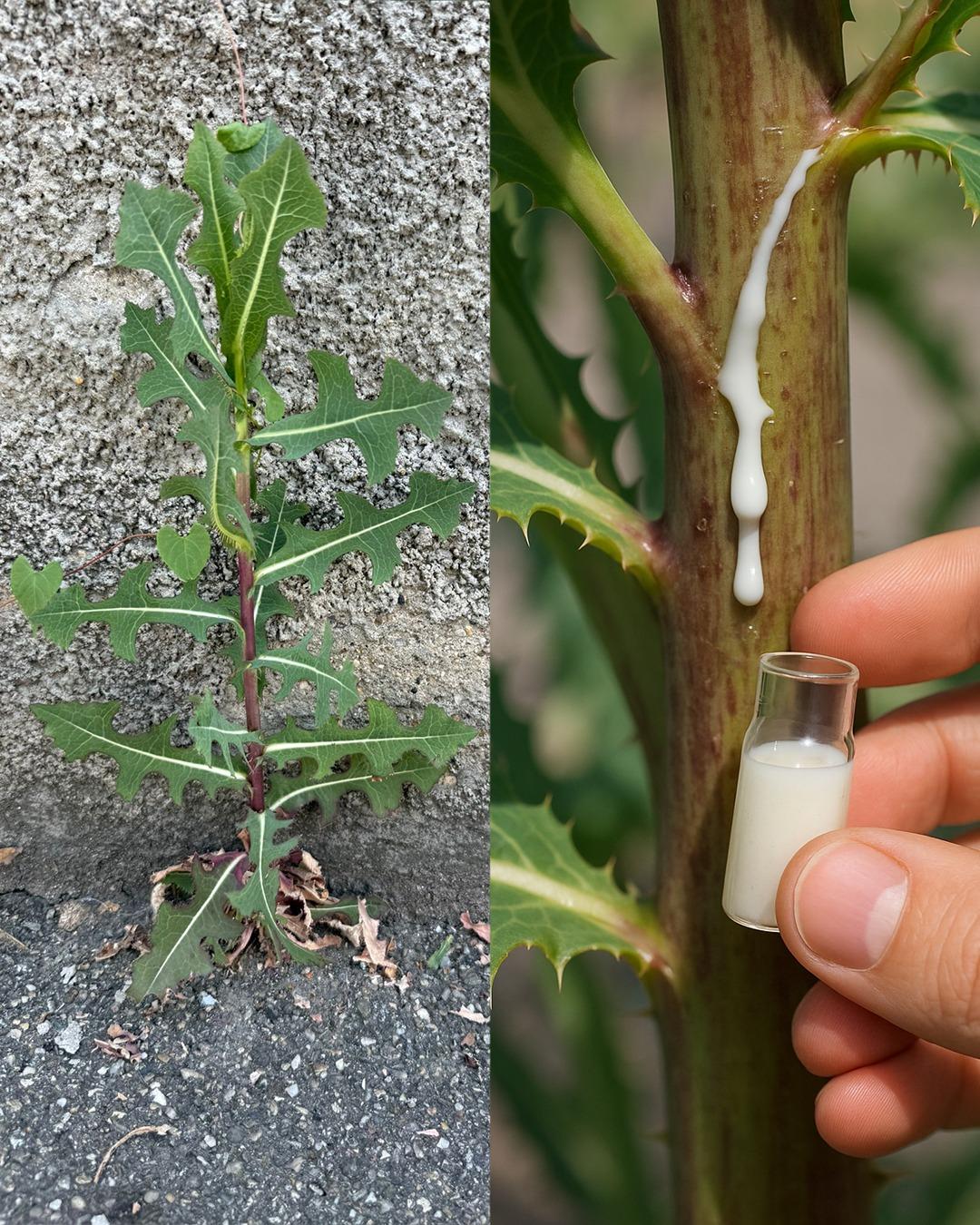Wild lettuce (Lactuca virosa), often called “opium salad,” has been used for centuries as a natural remedy for pain relief and relaxation. The milky-white sap found in the stems and leaves, known as lactucarium, is the strongest part of the plant. Although it does not contain opiates, it is traditionally prized for its mild sedative and analgesic properties.
In this article, we will explore how to collect wild salad juice, its benefits, its frequent uses, and its safety considerations. Whether you’re new to the world of herbal remedies or just curious, this guide will help you understand what makes wild lettuce juice so special.
How to collect wild salad juice
Collecting wild salad juice requires patience and the right technique to get the most out of the plant. Here’s how to proceed safely:
1. Identify the right plant
Wild lettuce grows in open fields, roadsides, and choppy ground surfaces.
It has tall, spiny leaves with a blue-green hue and can grow up to 6 feet tall.
When the stem is broken off, it releases a milky-white juice – this is lactucarium.
2. Harvest the juice
Choose mature plants: Older plants produce more sap.
Cut off the stem near the roots with a clean knife.
If the juice starts to seep, collect it with a spoon or scrape it onto a glass plate.
Repeat the process: Make more cuts further up the trunk and branches to allow more sap to flow.
Allow the juice to dry naturally to form a brownish resin.
Store it in a small, airtight container away from moisture.
Ver continuación en la página siguiente
What is wild lettuce juice used for?
People have been using wild salad juice for generations, primarily as a natural painkiller and mild sedative. Here are some of the most common uses:
- Pain Relief: Traditionally used for mild pain, headaches, and muscle aches.
- Relaxation and sleep aid: Some people use it as a natural way to promote relaxation and better sleep.
- Stress and anxiety relief: Slight calming properties can help with tension and nervousness.
- Cough suppression: In the past, it was used in small amounts to help with persistent coughing.
- Mild euphoric effect: Although it is not intoxicating, it can produce a feeling of calm and well-being.
How to use wild lettuce juice
There are several ways to use wild salad juice, depending on personal preference and the intended effect.
1. As a tincture
- Mix dried juice with alcohol (vodka or brandy) in a small glass.
- Leave it on for 2-4 weeks, shaking it occasionally.
- Strain the liquid and store in a dropper bottle.
- Start with a small dose, such as 1-2 drops of water, and slowly increase as needed.
2. As a tea (with the leaves, not with the juice)
- Boil 1-2 teaspoons of dried wild lettuce leaves in water.
- Let it steep for 10-15 minutes.
- Drink before bed to relax.
3. Direct consumption (not recommended for beginners)
- Some herbalists consume a tiny amount of dried juice (a piece the size of a grain of rice) that is dissolved in water or tea.
- This method requires caution due to its effectiveness.
4. Topical use (for pain relief)
- The juice can be mixed with a carrier oil (such as coconut oil) and applied to sore muscles or joints.
- Avoid using it on broken skin.
Important disclaimer
This article is for informational purposes only. While wild salad juice is traditionally used for various health benefits, it is not a medically approved treatment. We strongly recommend that anyone interested in using wild lettuce consult a qualified doctor before attempting to use it in any form.
Important considerations:
- It’s all about the dosage: Excessive use can lead to nausea, dizziness, or other unwanted side effects.
- Not for everyone: Pregnant women, children and people with pre-existing conditions should avoid the use of wild lettuce without medical advice.
- We take no responsibility for abuse: This article is not a substitute for professional medical advice, and we are not responsible for any consequences resulting from self-experimentation.
Final Thoughts
Wild salad juice is a fascinating natural remedy with a long history of use. Although it has promising traditional benefits, it is not a substitute for medical treatments. If you’re considering trying it, start with small amounts, do your research, and always consult a professional if you have any concerns.
Do you want to discover other powerful herbal remedies? Stay informed and stay safe!
